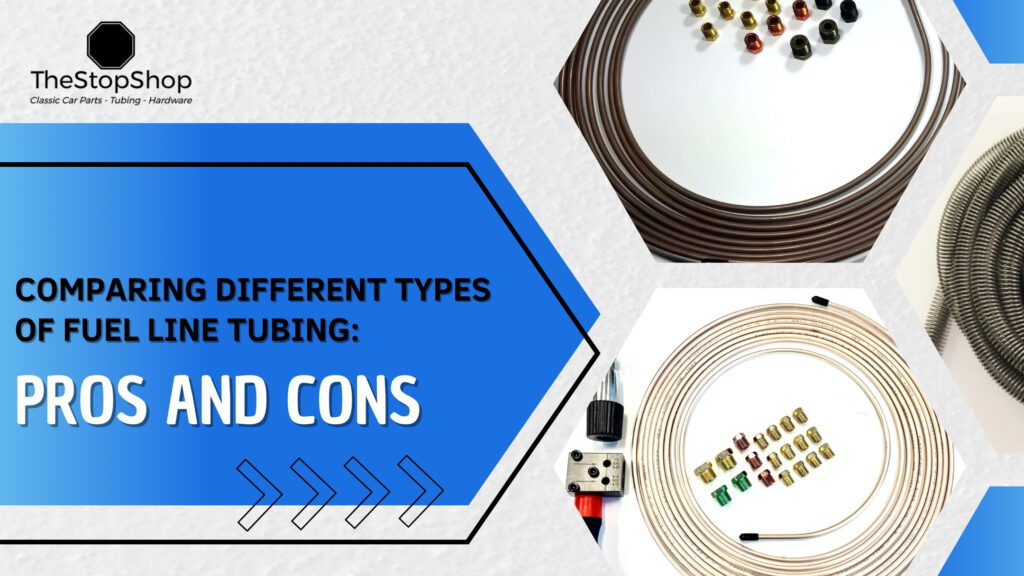
Fuel line tubing is essential in any automobile’s main fuel line system as it delivers fuel from the tank to the engine. While selecting fuel line tubing, one has to think about the material to use, the flexibility, corrosion resistance, and installation convenience of the particular tubing. In this blog, you will find the benefits and drawbacks of copper-nickel brake lines, steel lines, and rubber hoses for fuel line tubing to make a choice.
Copper Nickel Fuel Line
Pros
Corrosion Resistance: Copper Nickel fuel linesare not prone to corrosion and hence can be used in areas that are exposed to moisture and salt.
Flexibility: Due to its flexibility, this material is relatively easy to work with during installation as compared to steel. One can easily bend it and route it through various confined regions without the use of any tool.
Durability: Copper Nickel fuel lines are also very strong and can easily handle high pressure thus making the fuel system to be very safe and efficient. You can easily install them with brake line clips.
Cons
Cost: Copper Nickel fuel lines are used at a higher cost as compared to steel or rubber fuel lines. This will in turn be very helpful, especially for those people who have a very small budget.
Availability: Though it is being used more and more, Copper Nickel tubing may not always be as easy to come by as steel tubing.
Steel Fuel Line
Pro
Strength: High-pressure steel fuel lines are strong and are therefore ideal to be used in many automobiles today.
Cost-Effective: Compared to Copper Nickel material, steel tubing is comparatively cheaper which buyers can consider for their own needs easily.
Cons
Corrosion: It must be noted that steel is susceptible to rust and corrosion, especially when it is used in areas that are exposed to moisture and road salt. This can cause leakage and probably overall fuel system problems down the line.
Flexibility: Compared to Copper Nickel, steel tubing is more rigid and needs some specific tools for bending and fixing. This is because it may take longer time as well as be more complex than any other installation process.
Rubber Fuel Line
Pros
Flexibility: Rubber fuel lines are very flexible and can easily be placed through confined areas. It can easily be cut to any preferred length and installed using simple tools.
Cost: Rubber tubing is usually the cheapest type of tubing, and therefore most suitable for use in many processes.
Cons
Durability: Rubber fuel lines are not as strong as metal ones and may wear out with time due to heat, chemicals, and general weathering effects.
Pressure Resistance: The rubber tubing cannot withstand high pressure; therefore, its application is restricted in some fuel systems.
Copper Nickel Brake Line and Its Application
Pros
Corrosion Resistance: Copper Nickel brake lines are very resistant to corrosion, thus useful for brake systems in harsh environments.
Ease of Installation: Copper Nickel brake lines offer an easy means of installation as compared to other brake lines that require the use of complicated bending equipment.
Cons
Cost: The only downside to Copper Nickel brake lines is their high cost compared to regular steel brake lines can be a discouragement to some.
Availability: While using 3/16 brake linesmade from copper-nickel has increased over the years, they might be less common than steel brake lines.
Conclusion
Several factors are considered when selecting the fuel line tubing; these include the specific application, cost, and the climate in which the vehicle is to be used. Copper Nickel fuel lines can be used in fuel applications that require highly resistant and flexible fuel lines but can be expensive. Steel lines are, however, more preferred for their high strength and economic nature though they are prone to corrosion. Rubber lines have the advantages of flexibility and low cost but have less strength than metal lines. Looking at the advantages and disadvantages of each type, one can draw a conclusion that will be most beneficial for him or her and at the same time guarantee the efficiency of the fuel system of the car.